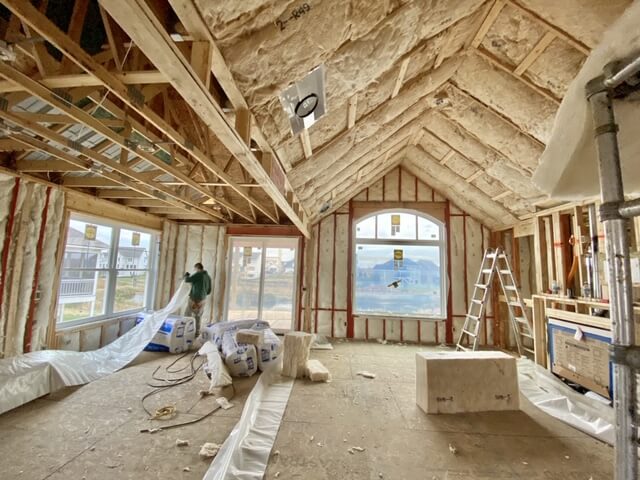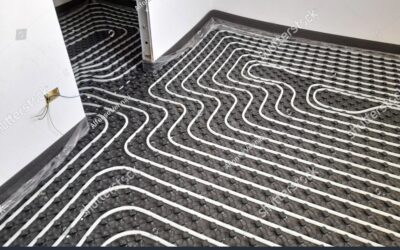The Ultimate Guide to Flooring Underlayment: Everything You Need to Know
When it comes to installing new flooring, most people focus on the type of flooring they want—hardwood, carpet, tile, or laminate. But there’s an unsung hero in the flooring world that often gets overlooked: flooring underlayment. This hidden layer plays a crucial role in the performance, comfort, and longevity of your floors. Whether you’re a DIY enthusiast or hiring a professional home renovation contractor like A2Z Construction & Renovations, understanding underlayment is key to achieving the best results for your flooring project.
In this article, we’ll break down everything you need to know about flooring underlayment in simple, easy-to-understand terms. By the end, you’ll know why underlayment matters, what types are available, and how to choose the right one for your home.
What Is Flooring Underlayment?
Flooring underlayment is a layer of material that sits between your subfloor (the base layer of your floor) and your finished flooring. It’s like the middleman that ensures everything works together smoothly. While it might not be visible, its job is incredibly important. Underlayment provides support, insulation, and protection for your floors.
Think of it like this: if your flooring were a sandwich, the underlayment would be the condiments and fillings that make it taste great. Without it, your flooring might not perform as well or last as long.
Why Is Underlayment Important?
Underlayment might seem like an extra step or expense, but it’s worth it for several reasons:
- Comfort: Underlayment adds cushioning under your feet, making your floors more comfortable to walk on. This is especially important for hard surfaces like tile or hardwood.
- Noise Reduction: If you’ve ever lived in an apartment or multi-story home, you know how annoying it can be to hear every footstep from the floor above. Underlayment helps absorb sound, reducing noise for both you and your neighbors.
- Moisture Protection: Some types of underlayment act as a moisture barrier, preventing water from seeping into your flooring. This is especially important in areas like basements, bathrooms, or kitchens.
- Insulation: Underlayment can provide thermal insulation, helping to keep your home warmer in the winter and cooler in the summer.
- Smoother Surface: If your subfloor isn’t perfectly even, underlayment can help create a smoother surface for your flooring. This prevents bumps, dips, or uneven wear over time.
- Extended Floor Life: By providing a protective layer, underlayment helps your flooring last longer. It reduces wear and tear, preventing damage from moisture, impact, or shifting subfloors.
Types of Flooring Underlayment
Not all underlayment is created equal. The type you need depends on the flooring you’re installing and the conditions of your subfloor. Here are the most common types of underlayment:
1. Foam Underlayment
Foam underlayment is one of the most popular options, especially for laminate and engineered wood flooring. It’s lightweight, easy to install, and provides excellent cushioning and noise reduction. Foam underlayment is also affordable, making it a great choice for budget-conscious homeowners.
- Best for: Laminate, engineered wood, and floating floors.
- Pros: Lightweight, affordable, good sound absorption.
- Cons: Not suitable for areas with moisture.
2. Cork Underlayment
Cork is a natural, eco-friendly option that’s perfect for homeowners who want a sustainable choice. It’s soft, durable, and provides excellent soundproofing and insulation. Cork underlayment is also resistant to mold and mildew, making it a good option for moisture-prone areas.
- Best for: Hardwood, laminate, and tile floors.
- Pros: Eco-friendly, great soundproofing, moisture-resistant.
- Cons: More expensive than foam.
3. Rubber Underlayment
Rubber underlayment is known for its durability and noise reduction. It’s a great choice for high-traffic areas or commercial spaces. Rubber is also resistant to moisture, making it suitable for basements or bathrooms.
- Best for: Hardwood, laminate, and tile floors.
- Pros: Durable, excellent soundproofing, moisture-resistant.
- Cons: Can be more expensive and heavier to install.
4. Felt Underlayment
Felt underlayment is made from recycled materials and is a great option for hardwood floors. It provides a soft, cushioned feel and helps reduce noise. Felt is also breathable, which helps prevent moisture buildup.
- Best for: Hardwood floors.
- Pros: Soft, eco-friendly, good sound absorption.
- Cons: Not ideal for moisture-prone areas.
5. Plywood Underlayment
Plywood underlayment is a sturdy option used to create a smooth, even surface over uneven subfloors. It’s often used under hardwood, tile, or vinyl flooring. Plywood is strong and durable, but it doesn’t provide much cushioning or soundproofing.
- Best for: Hardwood, tile, and vinyl floors.
- Pros: Creates a smooth surface, durable.
- Cons: No cushioning or soundproofing.
6. Moisture Barrier Underlayment
If you’re installing flooring in a damp area like a basement or bathroom, moisture barrier underlayment is a must. It’s designed to block water vapor from reaching your flooring, preventing warping, mold, and mildew.
- Best for: Basements, bathrooms, and kitchens.
- Pros: Excellent moisture protection.
- Cons: Limited cushioning or soundproofing.
Read more: Budget-Friendly Home Extensions
How to Choose the Right Flooring Underlayment
Choosing the right underlayment depends on several factors:
- Type of Flooring: Different flooring materials require different types of underlayment. For example, laminate flooring works well with foam underlayment, while hardwood may need felt or cork.
- Subfloor Condition: If your subfloor is uneven, you may need plywood underlayment to create a smooth surface. For moisture-prone areas, a moisture barrier is essential.
- Budget: Underlayment costs vary, so consider your budget. Foam is the most affordable, while cork and rubber are more expensive.
- Noise Reduction: If soundproofing is a priority, look for underlayment with good acoustic properties, like cork or rubber.
- Insulation Needs: If you want added insulation, choose underlayment with thermal properties, such as cork or foam.
Installation Tips for Flooring Underlayment
Installing underlayment is usually straightforward, but here are a few tips to ensure success:
- Prepare the Subfloor: Make sure your subfloor is clean, dry, and free of debris before installing underlayment.
- Follow Manufacturer Instructions: Different types of underlayment have specific installation guidelines. Always follow the manufacturer’s instructions.
- Use the Right Tools: A utility knife, tape measure, and adhesive (if needed) are essential for installing underlayment.
- Overlap Seams: If you’re using moisture barrier underlayment, overlap the seams and tape them securely to prevent moisture from seeping through.
- Check for Gaps: Make sure there are no gaps between underlayment panels, as this can affect the performance of your flooring.
Read more: The Essential Guide to Kitchen Cabinets for the Perfect Kitchen Renovation
Common Mistakes to Avoid
Even though underlayment is relatively simple to install, there are a few common mistakes to watch out for:
- Skipping Underlayment: Some homeowners try to save money by skipping underlayment, but this can lead to problems like noise, uneven floors, and reduced floor life.
- Using the Wrong Type: Make sure you choose underlayment that’s compatible with your flooring type and subfloor conditions.
- Poor Installation: Rushing through the installation process can result in gaps, uneven surfaces, or moisture issues.
Final Thoughts
Flooring underlayment might not be the most glamorous part of a flooring project, but it’s one of the most important. It provides comfort, protection, and performance, ensuring your floors look great and last for years to come. Whether you’re installing hardwood, laminate, tile, or carpet, taking the time to choose the right underlayment will pay off in the long run.
So, the next time you’re planning a flooring project, don’t forget about the unsung hero beneath your feet—flooring underlayment. Your floors (and your feet) will thank you!
Our Services
Home Renovation Mississaugaa
Home Renovation Oakville
Home Renovation Burlington
Home Renovation Hamilton


















